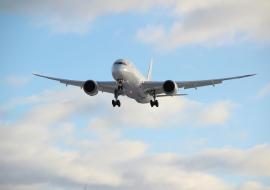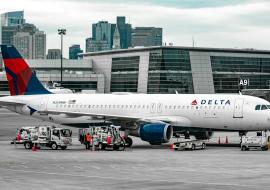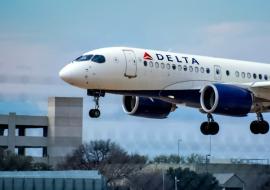Hawaiian Airlines Sued By Sabre For Alleged Contract Breach

Global Distribution System (GDS) provider Sabre filed a lawsuit in the Southern District of New York against the American carrier Hawaiian Airlines for an alleged breach of contract
According to the lawsuit filed by Sabre, the American carrier Hawaiian Airlines has supposedly prevented travel agencies using Sabre to book the carrier’s inter-island flights starting May 31st. Additionally, the airline has begun to levy U.S.-based travel agents a $7 surcharge on all segments booked through Sabre and operated by Hawaiian.
According to the Official Airline Guide (OAG), during the summer of 2022, Hawaiian operated four routes from the capital’s airport:
Honolulu (HNL) to Kahului (OGG)
Honolulu (HNL) to Hilo (ITO)
Honolulu (HNL) to Kona (KOA)
Honolulu (HNL) to Lihue (LIH)
To better gauge the magnitude of the economic impact caused by Hawaiian’s new distribution policy on Sabre and travel agents, it is helpful to analyze the carrier’s inter-island network and the demand characterizing it. Between June and August 2022, the airline deployed 1,831,249 seats on inter-island flights, which travel agencies using Sabre could not sell, affecting not only their business but also Sabre. Moreover, according to Sabre, 617,176 people travelled between Hawaii’s capital and the four islands’ airports in June and July.
According to OAG, in 2022, Hawaiian will operate at 89% of its pre-pandemic capacity for a total of 12,856,898 seats. In the aftermath of the COVID-19 pandemic, all airlines worldwide are eager to increase their traffic volume and revenues.
Consequently, to improve traffic, Hawaiian had previously informed travel agents that all of its flights, including inter-island services, would be made available to purchase without surcharges through alternative means. These include HA Connect, the airline’s partner portal, and HA Connect approved partners, among which one finds TPCO, ClarityTTS, NuFlights, Thomalex, Tidesquare, Travelfusion, TravelNDC, and Verteil Technologies. According to the airline, these partners use the New Distribution Capability (NDC), which enables them to connect to the airline through the so-called application programming interface (API) technology rather than relying on global distribution systems like Sabre.
Why would airlines choose distribution partners using NDC instead of a traditional GDS like Sabre? Several airlines are progressively moving towards NDC, which now seems to represent the future of airline distribution. Indeed, NDC allows for an efficient net sale cost in all distribution channels, delivers effective merchandising, and improves the understanding of customer demand.
The standard NDC is owned and developed by IATA, and it differs from a traditional GDS in several ways; while GDSs share only limited information with the travel agents, generally related to airfares and schedules, NDC enables the airline to share a rich amount of information to the travel agents, which can therefore improve the services and products made available to the customers.
The main revolution of NDC is that the end customer can now access the same services through a third party, say a travel agent, as they can from an airline’s website. These services include the whole range of ancillary services and products which have become of paramount importance for airlines, among which one finds additional baggage, the choice of seats onboard, special meals, fast track at the airport and so on. Currently, more than 45 airlines around the world have adopted NDC.
Source: Breaking Travel News














